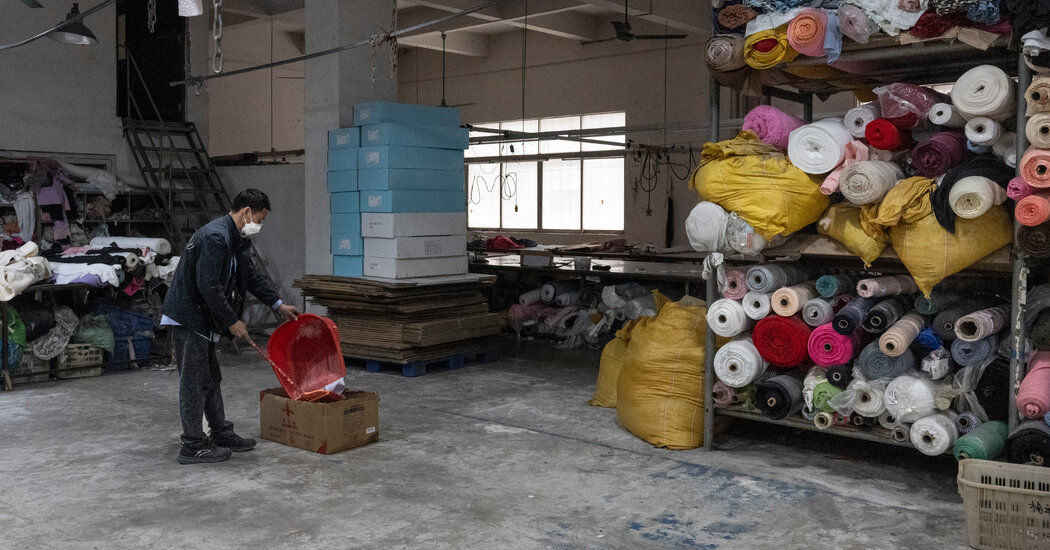With the tariffs that President Trump unveiled on Wednesday, he is not just closing America’s front door to Chinese exports — he is slamming the back doors shut as well.
He has now piled tariffs totaling 54 percent on goods coming straight from China, on top of tariffs of up to 25 percent that he imposed on many imports from China during his first term. More significantly, his latest actions attempt to cut off a series of alternative routes for Chinese goods to reach American store shelves and households.
Since Mr. Trump began imposing tariffs on goods from China seven years ago, many Chinese companies have poured billions of dollars into building industrial parks in countries like Vietnam, Cambodia, Thailand, Malaysia and Mexico. In turn, these facilities have been importing components from China, assembling them into finished goods, and shipping them to the United States.
But Mr. Trump hit Mexico with extra tariffs earlier this year, and this week announced tariffs of as much as 49 percent on China’s partner countries in Southeast Asia as well.
“It’s a targeted effort to seal back doors for Chinese access to the U.S. market,” said Dan Wang, a China director in the Singapore office of the Eurasia Group, a consulting firm. “The result is permanently higher import costs from China, whether direct or through third countries.”
Mr. Trump also announced on Wednesday that starting on May 2, the United States would begin collecting tariffs on the more than $60 billion a year in so-called de minimis imports from China that are exempt from tariffs now because each shipment is worth less than $800. That move will add steep taxes to the cost of packages ordered through services like Shein and Temu.
Mr. Trump’s tariffs are so steep on transshipment countries like Vietnam and Cambodia that they might prompt companies to reconsider China, businesspeople and analysts said. While countries in Southeast Asia offer lower wages than China, savings on labor costs there are often offset by much higher costs for materials like steel and plastic and for components like electronics, almost all of which are imported from China.
China also benefits from many of the world’s most automated ports, new airports and an extensive network of smooth highways up to 12 lanes wide. Alternative sourcing countries in Southeast Asia have overburdened ports, crowded airports and potholed roads, all of which can lead to long, costly delays in shipments and quality problems.
“If no nation can escape from tariffs, I’m wondering if global supply chains will gravitate back to China, where the economics of manufacturing are too attractive,” said Han Shen Lin, China country director for the Asia Group, a consulting firm.
Mr. Trump announced extra tariffs on Wednesday of 49 percent on Cambodia, 46 percent on Vietnam, 37 percent on Thailand and 24 percent on Malaysia.
The exception among so-called backdoor countries is Mexico, to which Mr. Trump is giving special treatment, with no extra tariffs imposed on Wednesday.
Mexico now buys $11 worth of goods from China for every $1 that it sells to China. Such a trade imbalance would cause worries in many countries about job losses. But soaring imports from China have not triggered such worries in Mexico because most of the extra goods are being assembled at industrial parks in northern Mexico for re-export to the United States.
Mr. Trump conspicuously did not place further tariffs on Thursday on goods from Mexico. He had imposed 25 percent tariffs earlier this year on imports from Mexico, but then rescinded them for goods that mostly have components made in North America.
The net result of this initial imposition and partial removal has been that the United States now imposes 25 percent tariffs mainly on products that arrive from Mexico with a high share of Chinese content.
The United States and Mexico have been conducting talks on whether Mexico might soon raise its tariffs on all countries with which it does not have free trade agreements, said two people familiar with the talks who are not authorized to comment on them. That approach would comply with World Trade Organization rules, which Mexico is still following even as the Trump administration does not.
Mexico has free trade agreements with about 50 countries, but not with China, India or Brazil.
If Mexico raises tariffs on countries with which it does not have free trade agreements, but not with the United States and other countries with which it does have such pacts, the effect would be to tie Mexico’s economy more closely to the United States. Tariffs would keep out goods transshipped from China, but the duty-free handling that began with the North American Free Trade Agreement three decades ago would be preserved.
